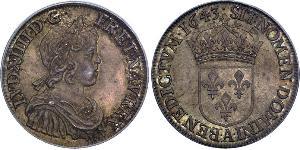1 Ecu Kingdom of France (843-1791) Silver Louis XIV (1638-1715)
1
coins in the group
Articles
|
You may be interested in following coins
2024-04-26
- Historical Coin Prices
2024-04-26
- New coin is added to 1000 Reis Kingdom of Portugal (1139-1910) Silver Carlos I of ...
1000 Reis Kingdom of Portugal (1139-1910) Silver Carlos I of ...
group has 42 coins / 40 prices
⇑
1899, Kingdom of Portugal, Charles I. Large Silver 1000 Reis Coin. XF! Mint Year: 1899 Reference: KM-540. Denomination: 1000 Reis Condition: Numerous bag-marks and scratches from circulati ...
You may be interested in ...

-500-250-hcHBwcI0T3gAAAEpKyQFQSHJ.jpg)
-300-150-hcHBwcI0T3gAAAEpKyQFQSHJ.jpg)







-300-150-dU0KbzbiBbcAAAFLl9Gjls34.jpg)






